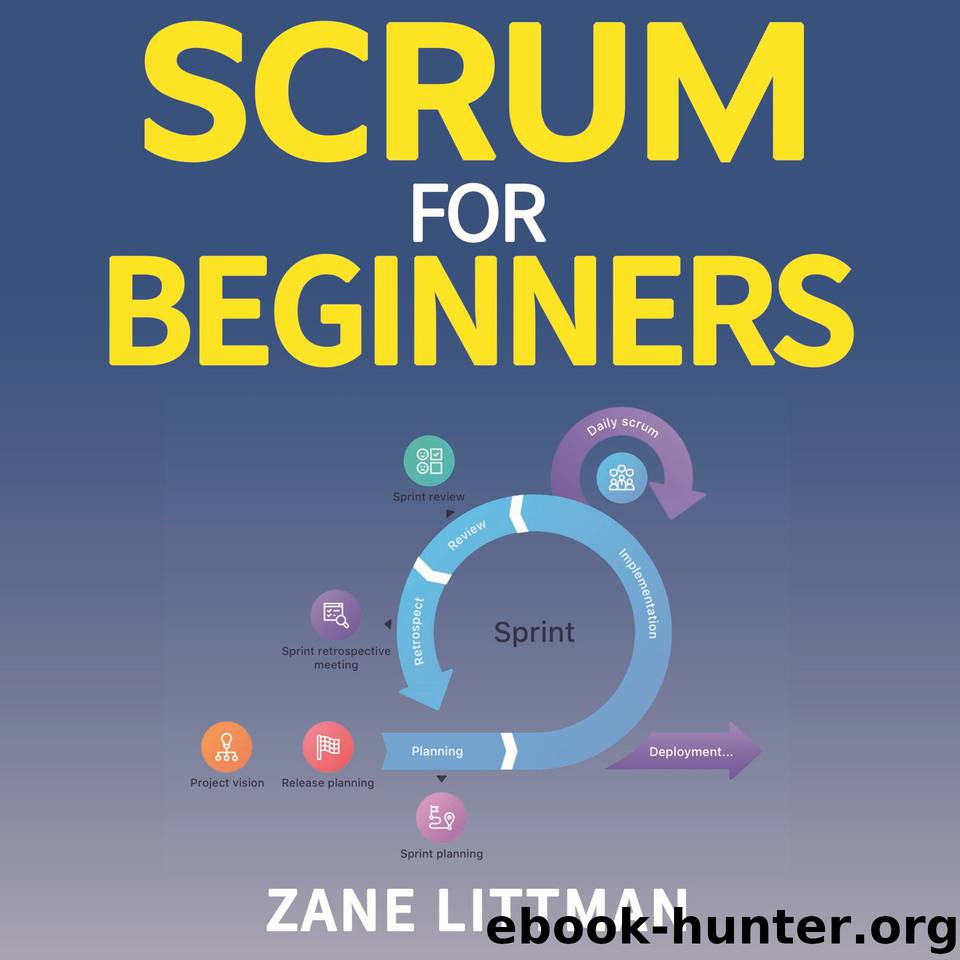Scrum for Beginners : An Ultimate Guide to Increase Productivity and Performances by Littman Zane

Author:Littman, Zane [Littman, Zane]
Language: eng
Format: epub
Publisher: UNKNOWN
Published: 2020-03-05T16:00:00+00:00
The break points that mark this location on the horizontal axis with the team's speed lines (pessimistic, rational and optimistic) are the date or sprint in which the version is expected to be completed.
This tool projects the product backlog forecast which is a living document whose evolution dictates the product's future development.
Poker planning: An agile strategy.
It is an agile activity to conduct the meetings which estimate the effort and length of tasks. The strategy game was designed by James Grenning to avoid lengthy discussions that do not conclude with clear conclusions.
The original Grenning pattern consists of 7 cards, with 1,2,3,5,7,10 and infinity numbers (Grenning, 2002).
The operation is very simple: each participant has a set of cards, and all face up the combination which adds the estimated effort in estimating each task.
If this is deemed to be more than x ideal hours (the average size accepted for a story by the team), the "all" card will be removed.
Tasks exceeding the maximum size must be disassembled into smaller subtasks.
Each team or company can use a set of cards with the correct numbers to the unit of effort they are working with, and to estimate the maximum size of the mission or story.
Version: Fibonacci sequence
This version, which consists of using only Fibonacci sequence numbers, was built based on the fact that increasing the size of the tasks increases ambiguity and margin of error, so that: ➢ The card game consists of Fibonacci numbers in succession.
➢ The calculation is not rendered by raising multiple cards in order to compose the exact figure (as in the original version of Grenning), but by facing the card with the estimate nearest to it.
Operative
➢ Every person in the meeting has a set of cards.
➢ For each task (user story or functionality, depending on the level of requirements to be estimated), the client, moderator or product owner exposes the description using a time to no exceed.
➢ Another extra time is set for the customer or product owner to answer the team's possible questions.
➢ Based on the calculation method used, each participant selects the card, or cards representing his prediction, and distinguishes them from the rest face down. ➢ When everyone has picked them, they're shown to be faced.
➢ If the calculation is "infinite," the function shall be divided into smaller subtasks, beyond the defined maximum limit.
➢ If the figures are very specific, who assumes responsibility for handling the meeting, with its management requirements, and depending on the characteristics of the project, can choose from: staff, meeting, number of things to be assessed...
o Asking people for extreme estimates: Why do you think so much time is needed? And why do you think so little time is needed? The team must repeat the prediction, after learning the reasons.
o Setting aside the estimation of this mission and resume those which have remained pending at the end or at another time.
o Asking the consumer or product owner to decompose the functionality and analyze each of the functionalities that arise.
o Taking the lowest estimate, the best or the average.
Download
This site does not store any files on its server. We only index and link to content provided by other sites. Please contact the content providers to delete copyright contents if any and email us, we'll remove relevant links or contents immediately.
Bad Blood by John Carreyrou(6476)
Rich Dad Poor Dad by Robert T. Kiyosaki(6316)
Principles: Life and Work by Ray Dalio(6129)
Playing to Win_ How Strategy Really Works by A.G. Lafley & Roger L. Martin(5772)
Management Strategies for the Cloud Revolution: How Cloud Computing Is Transforming Business and Why You Can't Afford to Be Left Behind by Charles Babcock(4494)
The Confidence Code by Katty Kay(4158)
Thinking in Bets by Annie Duke(4121)
American Kingpin by Nick Bilton(3710)
Delivering Happiness by Tony Hsieh(3332)
Project Animal Farm: An Accidental Journey into the Secret World of Farming and the Truth About Our Food by Sonia Faruqi(3139)
The Power of Habit by Charles Duhigg(3021)
The Tyranny of Metrics by Jerry Z. Muller(2954)
Mastering Bitcoin: Programming the Open Blockchain by Andreas M. Antonopoulos(2951)
Brotopia by Emily Chang(2947)
The Marketing Plan Handbook: Develop Big-Picture Marketing Plans for Pennies on the Dollar by Robert W. Bly(2901)
I Live in the Future & Here's How It Works by Nick Bilton(2900)
The Content Trap by Bharat Anand(2837)
Applied Empathy by Michael Ventura(2811)
Building a StoryBrand by Donald Miller(2807)
